Massage for Hip Pain. Does it work? Everything you need to know.
Sep 30, 2021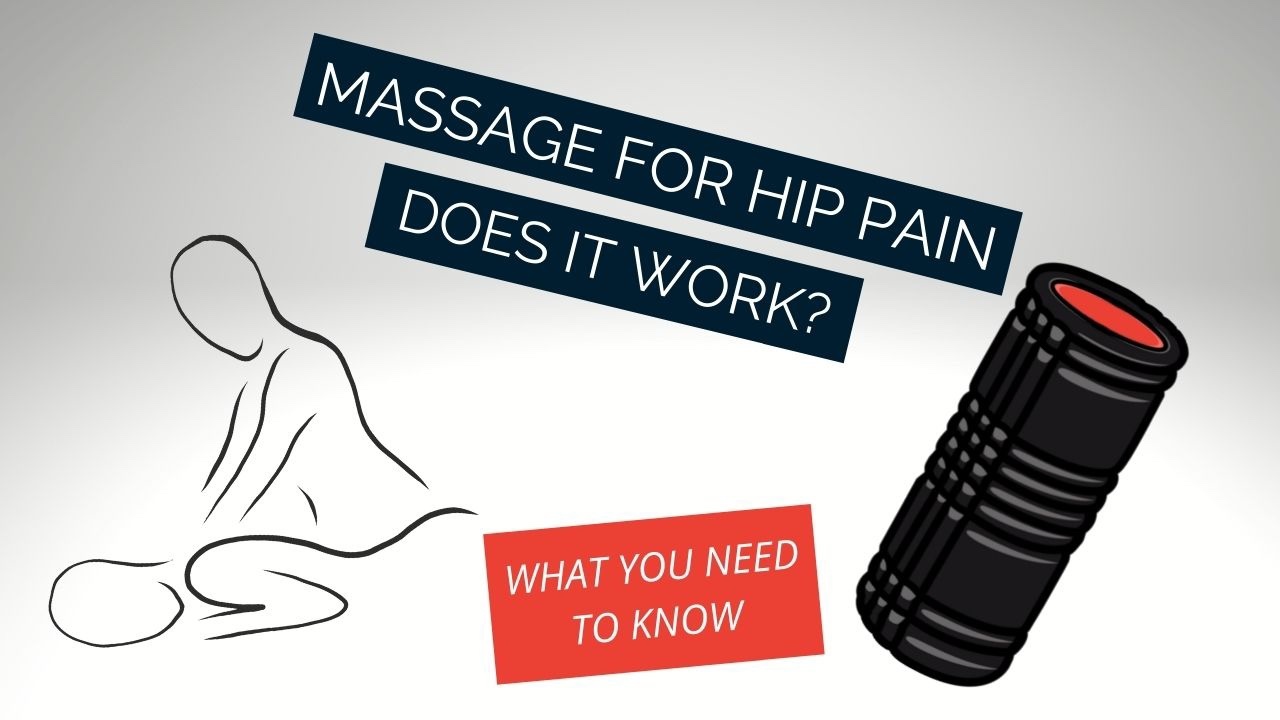
We all know that feeling after getting a massage. Relaxed, released and just a general sense of well-being. Even our chronic hip pain might settle down….for a bit.
Maybe for a day or two, or even a week. But just like clockwork, it returns. And right back to our massage therapist Hans or Esmeralda we go.
Or maybe we’ve taken massage therapy into our own hands. Self-massage or self-myofascial release. We use foam rollers, lacrosse balls, massage guns, kettlebells, sticks, brooms, shovels, and maybe even silverware! What can’t you use for self-massage these days!?
But just like working with a massage therapist, the pain feels better for a little bit and then it comes back. And back to the lacrosse ball we go.
This is what we’re told to do. It seems that almost every well-respected physical therapist and fitness guru recommends “trigger-point” therapy or “deep tissue work” for hip pain. So of course we try it. But eventually, we have to start thinking for ourselves. We have to start asking important and maybe uncomfortable questions.
What was that quote by that Einstein guy, “Insanity is doing the same thing over and over and expecting different results.” Right, that. Let me ask you an important question: if any of this stuff actually worked and made permanent changes to your hip pain, why do we have to keep doing it?
Does it make sense that we’d need a weekly appointment with a massage therapist to live without chronic pain? Does it make sense that we have to lay on a spiky foam roller to prevent our chronic hip pain from returning?
In this article, I’m going to help you analyze these questions. I’ll go over what the scientific research says about massage for hip pain. I’’ll go over the benefits and limitations for the most common massage therapy techniques and challenge some of the most closely held dogmas in the massage-therapy world.
At the end of the article, I’ll provide some suggestions on how you can better spend your time, money and effort to alleviate chronic hip pain and discomfort. But I won’t make you wait. The way to get out of hip pain is to build stronger and more flexible hips. Hips that can handle more load and access larger ranges of motion usually don’t hurt.
But let’s proceed on what you came here for. What can massage do for hip pain?
Can Massage help hip pain? The Good and the Bad.
Based on the introduction to this article, you would think I’m some type of anti-massage martyr. That’s not true. I just think it’s important to understand what massage can do for our hip pain and what it cannot.

I speak from personal experience. In my early-to-mid twenties I lived with chronic hip pain. Every morning before work and every evening after work, I would sit on a softball or lacrosse ball for 5-10 minutes “releasing the fascia.” This went on for months until I started questioning this habit.
Sure, the pain would feel better for a little bit. But then it would come back. And my first instinct was to get back on that softball. “I must’ve missed a fascia!” a young naive Maks would say to himself.
In hindsight, this seems ridiculous to me now. In the last decade, I’ve learned a lot more about the body and chronic pain. I still have a lot more to learn but what I can confidently say is that I didn’t miss any fascia when my chronic hip pain returned.
So what was going on then? What was causing this temporary relief in my chronic hip pain? Well I can’t answer this. And honestly, I don’t think most massage therapists, physical therapists and other health professionals in the industry can either.
Paul Ingraham, creator of www.painscience.com and former massage therapist himself, routinely creates content about controversial therapies for chronic pain. I trust Paul’s work because he had to question everything he knew in seeking the truth.
Many people get comfortable in their careers and never ask questions that jeopardize their livelihood. Even if there is a gut feeling that something isn’t quite right, it is easier to accept the status quo because it pays the bills.
There is a famous saying by Upton Sinclair that goes: “It is difficult to get a man to understand something when his salary depends on his not understanding it.” So I pay attention when an experienced massage therapist brings up valid points about the effectiveness of massage for pain.

In the article, Does Massage Therapy Work, Paul summarizes the general consensus of many experts in the massage therapy industry.
Let’s discuss the good news about massage first. Paul demonstrates that even some of the strongest critics against massage therapy had some relatively positive things to say about it. Here are some of their insights:
- ““We…know that massage may be as effective as cervical manipulation in relieving tension headache.” Sam Homola, DC, a chiropractic “heretic.”
- “Delightful.” - Patrick Wall, eminent neurologist and pain researcher.
- “[O]rdinary massage and the legitimate practice of massage therapy should not be categorized as quackery.” Dr. Stephen Barrett, a prominent anti-quackery activist.
- “The approval of smart, critical experts does suggest that the healthcare value of massage itself is at least plausible — and that simply isn’t true of many other common therapies in the marketplace. In contrast, consider how much anti-quackery activists object to chiropractic, homeopathy, and naturopathy.” Paul Ingraham, see above.
Now let’s discuss the bad. Paul then lists common held benefits of massage therapy that have been proven false by research. Read the below list carefully and ask yourself if your use of massage therapy is based on any of these misconceptions.
- To reverse tightness. In a 2010 study published in the journal of pain, researchers showed that the hardest (or tightest) spots in the trapezius muscles were not the most painful. In fact, the most painful areas were the softest spots of the muscle.
- To increase circulation. Multiple studies show the exact opposite. See here, here, or here. Massage does not increase circulation
- Detoxification. From Paul, “detoxification myths are among the most embarrassing of all massage myths.”
- To reduce muscle soreness from exercise. A 2012 study showed that the effect of massage on reducing muscle soreness was “too small to be of clinical relevance.” See Torres, et al.
- Releasing Fascia. Fascia is too tough to change and nothing is being actually “released.” The explanations for fascial therapy are not based on logic. An alternative theory to why one feels good after fascial therapy is because muscles have nerve endings. And by massaging them or applying pressure, the brain tells the body to relax. See Dr. Robert Schleip’s well-respected analysis on Fascial physiology.
- Reduces inflammation. See muscle soreness above.
So what does all this tell us about massage for chronic hip pain? Well for starters, I think it’s fair to say that most experts agree that massage is not total quackery. It has some therapeutic value and certainly has its place. It’s not like using crystals to magically get rid of your pain (no offense if you do that. But you should probably stop).
So what can massage do? Based on the research, massage does not not reduce tightness, increase circulation, detoxify, reduce soreness or release fascia. But it feels good. It relaxes us. It takes the edge off - from the pain, from anxiety and from life. Life is hard sometimes. And a massage is a nice treat.
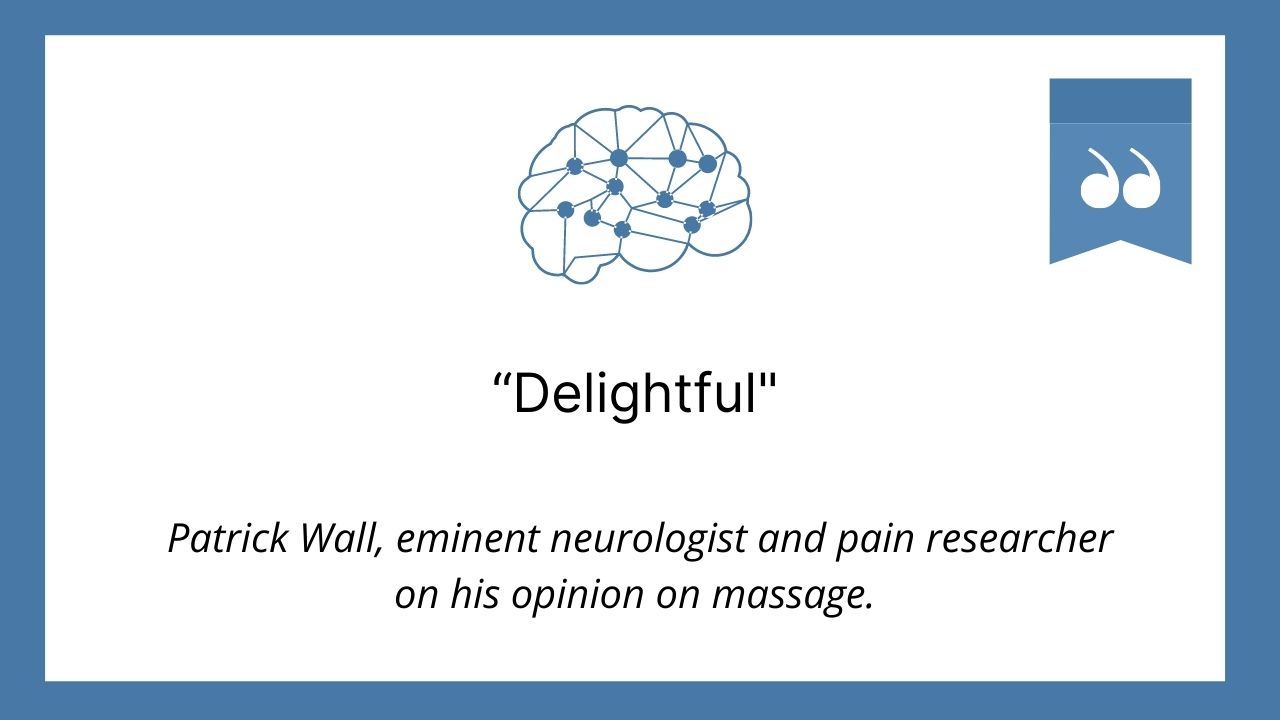
But massage therapy does not “fix” or “cure” chronic hip pain. This is true whether you’re receiving a massage from the leading therapist in the country or if you’re lying on a lacrosse ball in your living room. There is nothing wrong with either of these things. I just think it’s important to understand our motive and intention behind doing them.
Don’t just take my word for it. Read the materials above. Experiment with yourself. Talk to trusted professionals in relevant fields. And make a decision for yourself. Although getting massage for hip pain is misguided, it’s a relatively safe mistake to make.
Special Note on Massage for Hip impingement
Remember my story about laying on the softball twice a day. When I first started doing this, it was to “fix” my hip impingement. If i can go back in time, I’d take that softball and throw it at my face while yelling “Go find a coach that will teach you how to move your hips!”
I have other detailed articles and videos going over my journey with hip impingement. In those articles and videos, I explain that it wasn’t the “hip impingement” that was causing my pain. It was my limited ability to move my hips with function and my psychological relationship with the pain.
Hip impingement is a diagnosis many people get when they are in hip pain. It is not the cause of hip pain. Multiple studies have demonstrated that there is no link between hip impingement and hip pain. You can have hip pain and no hip impingement. You can also have no hip pain and have hip impingement.
One of my mentors and former employer, the wise Matt Hsu from Upright Heath wrote a great article about this topic: Femoral acetabular impingement: what you need to know and what your doctor won’t tell you. In the article, he lists some very helpful studies:
- Gosgiv et al, 2008 - Out of 4151 individuals with no history of hip pain, 17% of men and 4% of women had hip impingement.
- Reichenbach, et al. 2010 - 25% of young men in a Switzerland study with no hip pain had hip impingement.
- Weir et al. 2011 - there was no correlation between groin pain and limited hip range of motion and hip impingement.
What does this research tell us about massages for hip impingement? Well, first of all, it is not logical to conclude that hip pain is caused by hip impingement. So a positive hip impingement diagnosis really does not tell us anything except that you have a unique bone shape.
And the main reason one would get a massage for hip impingement is to reduce pain right? I don’t think many people are getting massages or rolling on foam rollers to change their bone shapes.
So using massage therapy to treat a diagnosis that is not causing your pain does not seem like the best use of resources. Where this can be especially sticky is if a professional is telling you that massage will heal hip impingement. This is plain wrong for so many reasons.
Want to get new exercises in your inbox every week? Sign up for my movement journal below to help you build healthier hips and a more consistent movement practice.
Massage Techniques for Hip Pain
There are so many massage techniques these days it’s hard to keep count. We have deep tissue massage, Swedish massage, foam rolling, massage gun, self-myofascial release and many more. Are any of these more effective for hip pain than others?
Based on what I’ve seen and read, it does not seem that any particular massage technique is superior to another. However, there are some other considerations to keep in mind when deciding which massage technique to use.
Massage Therapy and Deep Tissue Massage for Hip Pain
Let’s first discuss traditional massage. You lay down and someone rubs your hip for 45 minutes. In prior sections, we learned that massage therapy is unlikely to eliminate hip pain. But, massage therapy can induce feelings of relaxation and calm. And it may provide some temporary pain relief.
BUT, just like in any field, the quality of the practitioner makes all the difference. I trust massage therapists that understand their limitations. Those that will help me learn more about my body and support my journey toward pain-free hips.
I DON’T trust massage therapists that tell me WHY I am in pain and what they can do to get me out of pain. No one can say with absolute certainty why another person is in pain.
This is because pain is a complex multifactorial phenomenon. As fitness and health professionals, we can make objective assessments on movement function. But that only tells us part of the story. So if you have a massage therapist who is providing this type of false confidence, be wary.
Then there is deep tissue massage, which certainly had its 15 minutes of fame (and maybe still does?). Most of us know what this massage is. Either by experience or through common-sense. It’s a DEEP and intense massage that applies a lot of force into the soft tissue.
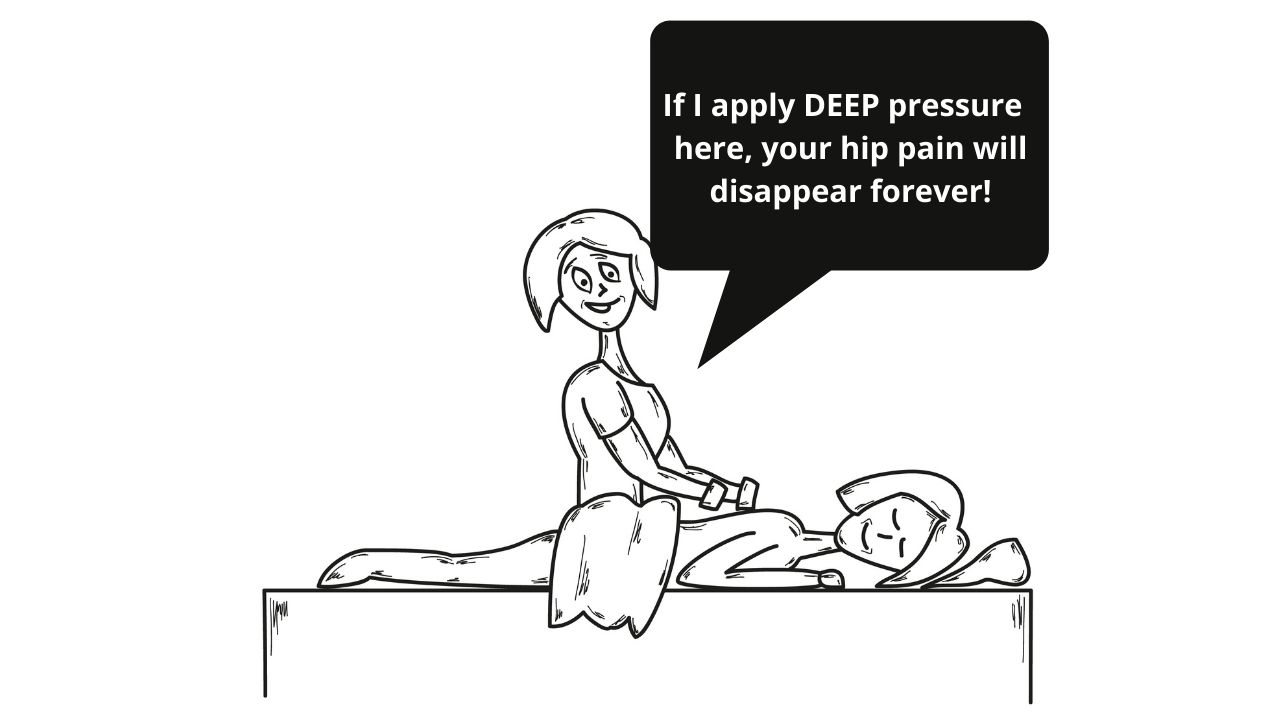
Deep tissue massage does not seem to be any more effective than regular massage. But it may come with side effects not present with traditional massage.
For instance, the Canadian Sport Massage Therapists Association, warns that “Years of sport massage practice have demonstrated that [deep tissue massage] does not improve recovery and generally leads to soreness.”
In addition, there are some scary but rare instances where people develop something called post-massage rhabdomyolysis after deep tissue massage. Rhabdomyolysis is a serious condition that can damage the internal organs. I don’t want to scare you and I don’t think this is common. But it’s certainly something to be aware of if you're someone that gets deep tissue massage often.
So moral of the story? If you’re looking for a relaxing massage experience, I recommend sticking to traditional massages from a skilled and experienced massage therapist. Just don’t look for it as a way to get permanent hip pain relief.
Self-Myofascial Release and Rolling Massage for Hip Pain
The last decade or so has brought on the self-myofascial release (“SMR”) revolution. First it was just foam rollers. Then the foam rollers came with spikes. Then they started vibrating. Now there are balls, guns, sticks and many other instruments to help you get “deeper’ into the fascia.
Once again, I remind you that I was sold on this hype. When I was first troubleshooting my hip pain, I spent hundreds of dollars on rollers and various other SMR instruments. I spent countless hours smashing and rolling out all those fascial adhesions. And when I first started working in corrective exercise, I had clients do the same.
There are some wonky explanations on why SMR is effective. These were listed earlier and include reversing tightness, reducing inflammation, breaking up fascia, etc. But there must be a reason for the SMR and rolling massage craze, right? There is something happening because people do experience pain relief, even if it’s short-term.
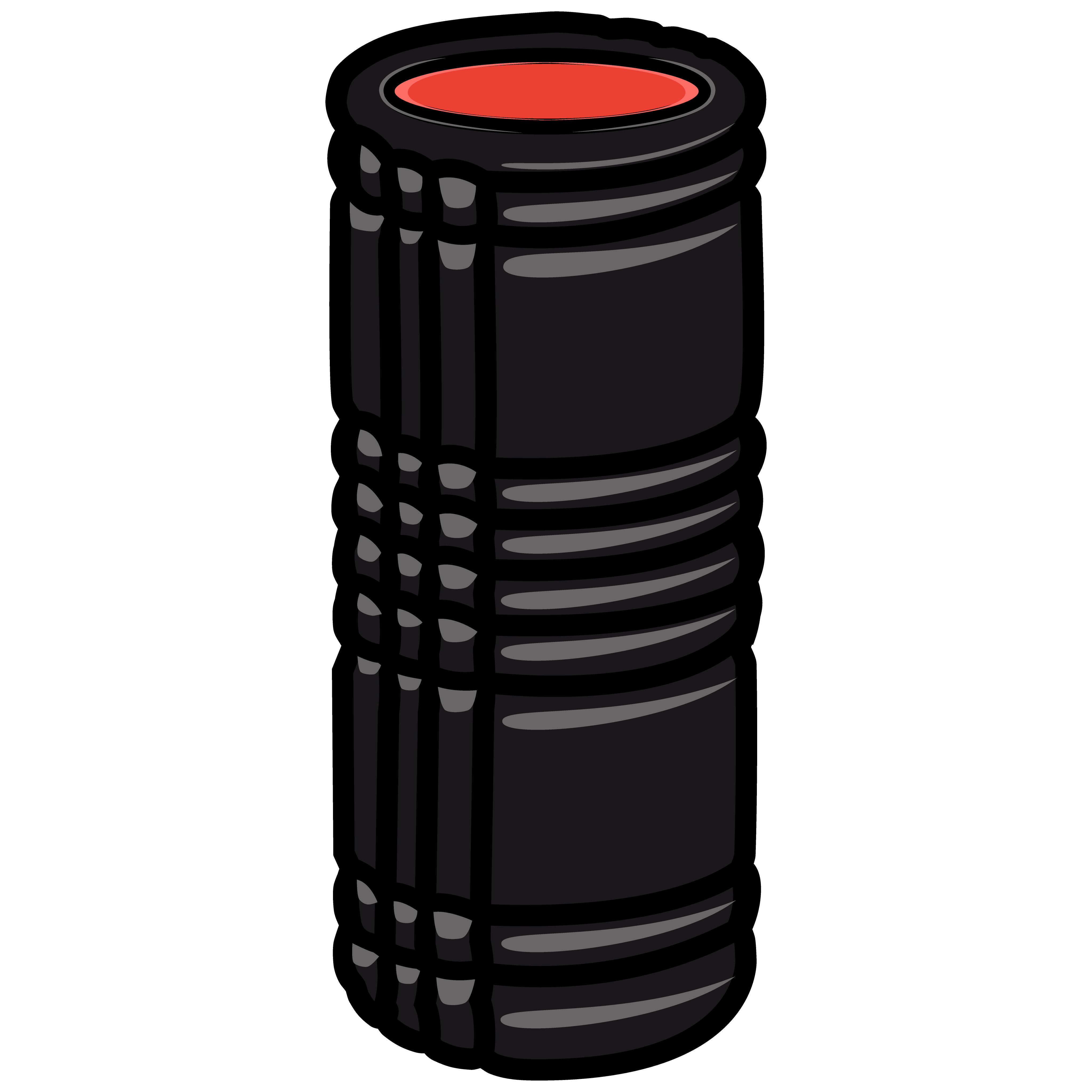
One theory that I like is the involvement of the nervous system. There are sensitive nerve endings in muscles. Applying pressure on these nerve endings sends signals to the brain to relax. These signals might contribute to the temporary pain relief we experience after SMR. See Dr. Robert Schleip’s well-respected analysis on Fascial physiology.
Does it really matter why SMR works? Let’s zoom out for a moment. The ultimate goal is to get rid of chronic hip pain. If laying on your foam roller once in a while helps you reach that goal then by all means, go for it. SMR is safe, relatively cost-effective (don’t get the theragun!) and can be time-efficient. There is not much risk and there can be a high reward.
But I rarely use SMR, foam rolling or any type of soft-tissue work with my clients. Why? Because time is better spent doing many other things. Like building strength in weak movement patterns. Or building flexibility in movements where there is limited range of motion. These are the things that induce permanent changes, not smashing muscles with expensive products sponsored by athletes and fitness influencers.
What about trigger points, knots and pressure points for hip pain?
One of the main justifications for massage therapy or SMR is to release trigger points in the muscle. These are sometimes called pressure points or knots. For the purposes of this section, I’ll use these terms interchangeably.
Let’s discuss massage therapy from a professional and SMR separately. This is because they each come with their own factors to consider.
Massage Therapy targeting Pressure Points for Hip Pain
Trigger point therapy is a hotly debated topic in the massage therapy industry. This is new. Up until recently, there seemed to be a consensus in the massage therapy industry. When muscles became overly stressed and were painful, they likely had pressure points. The massage therapist would apply pressure onto this point and voila! Pain vanished!
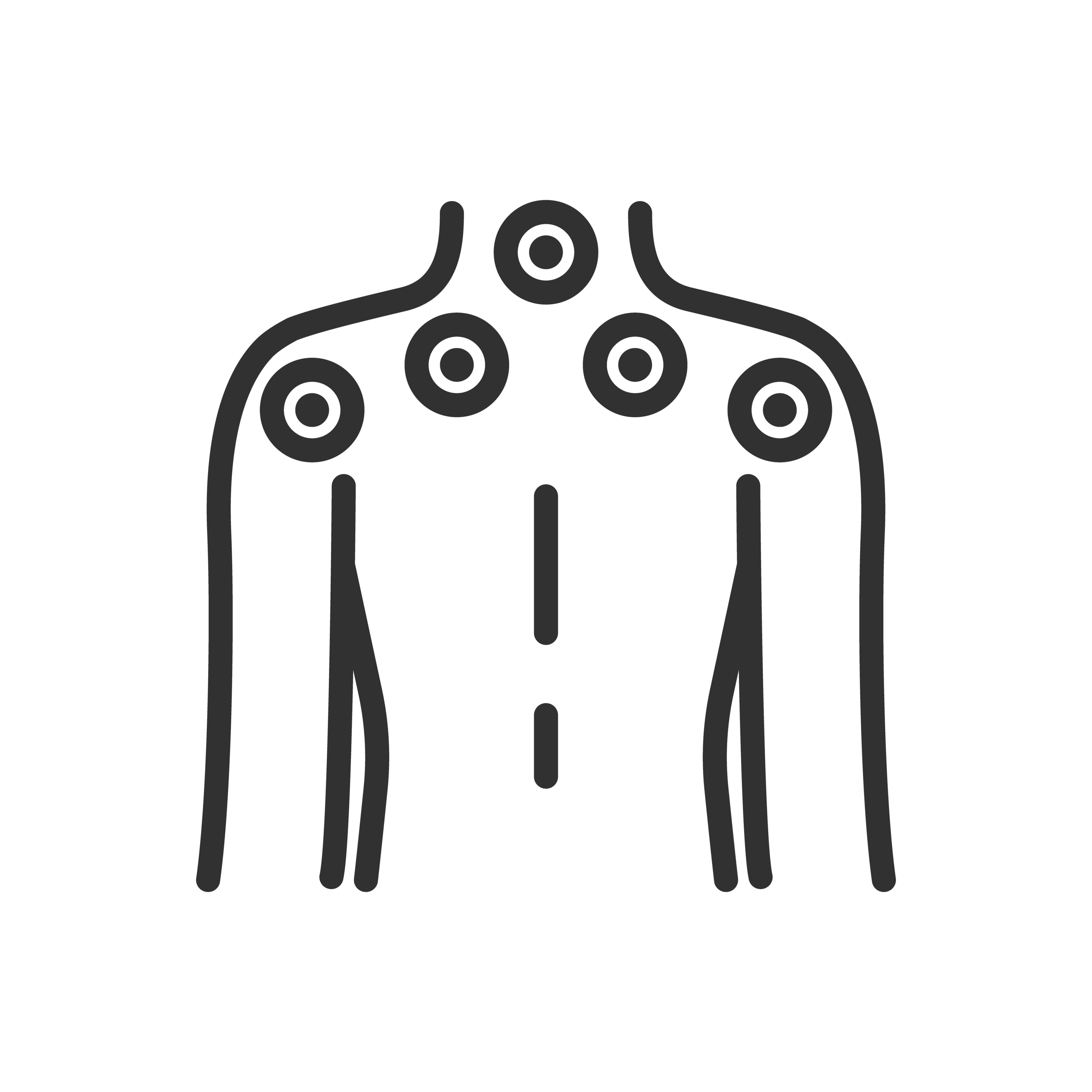
So what is the current controversy? Well for starters, the scientific support for trigger point therapy is shaky at best. Some studies find limited value while others dismiss it as complete pseudo science.
Let’s bring back Paul Ingraham, creator of painscience.com and former massage therapist himself. In his article, Trigger Point Doubts, he provides a comprehensive analysis on the current view on trigger points.
Here are some highlights:
- Dr. Fred Wolfe, a rheumatologist, “calls trigger point science a kind of pseudoscience, ‘cargo cult science’ and ‘pseudo-pseudoevidence based medicine,’ in which the so-called evidence ‘never reaches the level of evidence, and assertions, facts, definitions, and beliefs are derived without testing or without adequate scientific basis.’” Read Dr. Wolfe’s article here.
- Dr. Patrick Wall, a British neuroscientist and “the world’s leading expert on pain” says: “Hopefully we are emerging from an era of fantasy explanations for real phenomena….[Massage Therapists who wrote a popular book on trigger point therapy] have to face a community of therapists who are obsessionally committed to explanations for disease and for therapy unsupported by a scrap of evidence except for their claimed therapeutic success. From the book, Muscle Pain, Understanding its Nature and Diagnosis.
- A 1992 study had four leading massage therapists examine patients to see if they can agree on where trigger points existed in each patient. From the study’s designer: “They were the best. They wrote the book, they did the lectures. But, in the end, they could not find or agree on the trigger points. It was a disaster.” Wolfe et al, 1992.
- In a 2009 publication, researchers reviewed all recent studies that examined the reliability of using trigger points as a diagnostic tool. From the study’s abstract: “No study to date has reported the reliability of trigger point diagnosis according to the currently proposed criteria…physical examination cannot currently be recommended as a reliable test for the diagnosis of trigger points.” Lucas et al, 2009.
Ok so in english, what does all this tell us about hip pain? It tells us that it’s not advisable to have a massage therapist look for trigger points in your body. It also means there is limited evidence that massage therapy helps reduce or eliminate pain that is associated with trigger points.
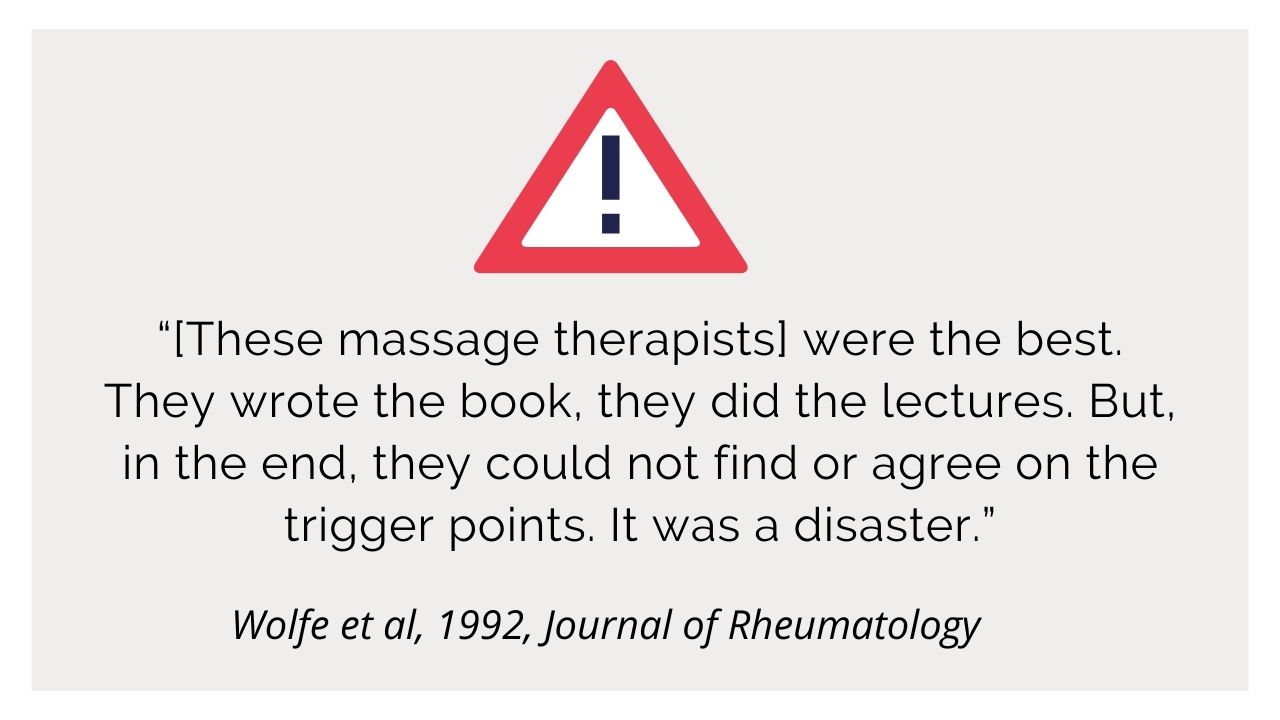
But what if massage makes you feel good? It helps you relax and makes your pain feel better. Then get massages! An important point I want to bring home in this article is that massage therapy is not bad. My goal in this article is to help you analyze your intention behind getting those massages.
Is your intention to get rid of your chronic hip pain? To help get rid of trigger points or pressure points that are responsible for your hip pain? Or is it because you like getting massages and it’s a way for you to unwind and relax? This is an important distinction.
Self Massage or Self-Myofascial Release for Knots and Trigger Points
What if we’re relying on the DIY massage method? Using foam rollers, lacrosse balls, massage guns or other self-myofascial release (“SMR”) methods to get rid of knots and trigger points that are causing pain in our hips?
All of the above research on trigger points applies here as well. But there are some additional factors I’d like to discuss here. For starters, it’s the overwhelming marketing push for these products. Athletes, fitness influencers and other celebrities swearing by the newest vibrating and body-temp regulated foam roller that uses AI to find your knots.
One product that always shows up on my instagram feed is the pso-rite, which was originally created to eliminate knots in the hip flexors, or the psoas muscle. Watching videos of people shoving this thing into their belly really makes me wonder how far this SMR trend is going to go.
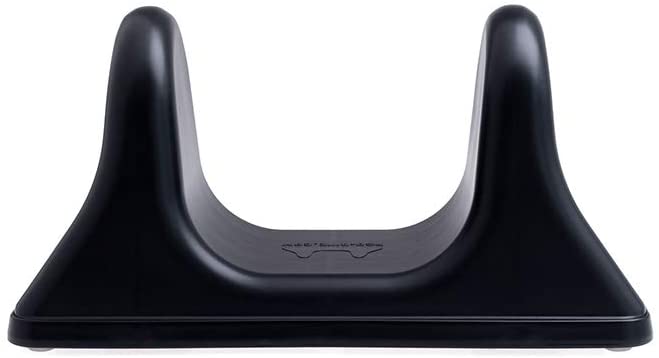
And what are we trying to do with these instruments anyway? Are we looking for knots? What do knots even feel like? Are they tender? Are they hard? Are they painful?
In an interesting 2010 study from the Journal of Pain, researchers tested the trapezius muscles on healthy patients after exercise. They wanted to see if the most sensitive or painful areas of the muscles were the “hardest.” Nope. The opposite, in fact. The study found that the most tender spots in the muscle were not hard at all. In fact, they were the softest part of the muscle.
So this adds even more confusion to the mix. I would bet that most people using SMR instruments are looking for hard and stiff areas in the muscle. But these areas might not even be where the issues are. If there even is an issue.
It’s possible that most people don’t really know what they’re doing with SMR. Maybe some of the more experienced practitioners are going off of “feel.” In other words, there is something in the muscle that “feels tight” or needs to be “released.” I don’t know, maybe.

I’ll be the first to admit that this used to be me. 10 years ago, I was convinced that SMR worked. All of the fitness gurus told me to do it. It felt pretty good. So I did it. But my hip pain would come back. And I became dependent on SMR. Before workouts, SMR. Before playing ball, SMR. After a long car ride, SMR.
It took some discomfort to challenge these beliefs. To challenge people that I trusted and told me to do SMR everyday. But today, I don’t use SMR. I train a lot. But this does not include lying on a foam roller for long periods of time.
Instead, I spend time working on increasing my ranges of motion through flexibility training. I work on increasing my strength through strength training. And I am not in pain. I do these things now because I love movement. And I love to display my newly acquired strength and flexibility in the activities I love.
Conclusion - What to do instead of massage for Hip Pain
In conclusion, I’d like to reiterate my position on massage for hip pain. I think massage, generally, is good. I get massages (if the business had a good month) and I know many people who I respect and trust that do also. But we do it because it relaxes us. It helps us wind down and it just generally feels good. We don’t do it to get rid of pain.
I think you should approach SMR the same way. Are you doing it because it feels good? Because it relaxes you? Then by all means, go for it. There is not much risk to it other than possibly wasting some training time. But I would not recommend doing it to get out of hip pain.
And I actually do think that both massage therapy and SMR can, for some people, provide some temporary pain relief. There is not much scientific support for this but that doesn’t mean it can’t happen. I’ve experienced it myself and I know others who have as well. But almost always, the relief is temporary.
So what if you are looking for a more permanent solution to hip pain? As I’ve hinted throughout this article, the path is to get your hips strong and flexible. This is not an easy journey. It’s not like laying on a massage bed and getting coddled by a masseuse.
It’s the opposite. It’s hard. It can be uncomfortable. It challenges your physical and mental limitations. But at the other side of this discomfort is a healther, stronger and more flexible body. Hips that allow you to do the things you’re meant to do. The things you love.




